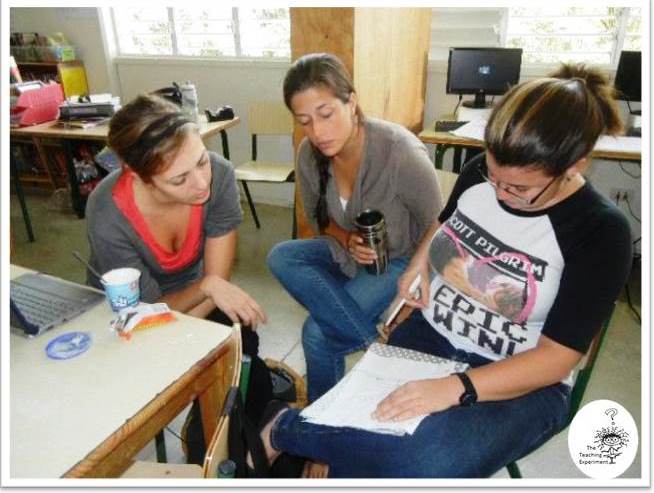Reflecting on the Year – A Way to Avoid Burnout
During our “time off” in the summer, the most important thing we can do to improve as teachers is to reflect on the past school year. I truly believe that teachers who don’t use this time to reflect and renew burn out faster. Everyone reflects in different ways: some share their ideas with peers or mentors, others journal or blog, and some quietly meditate on the year. Although I don’t think how we reflect matters, and everyone should reflect in a way that’s best suited to them, the steps we take in reflection are incredibly important.
1) Start with the positive. This can’t be emphasized enough. When I meet with teachers to discuss a lesson I’ve observed, I ask them how they felt it went. Even though I ask them to start with the positive points, they usually jump straight to their weaknesses, to what went wrong… to how bad it was. We are own harshest critics, and yet, we absolutely must recognize our strengths in order to build on them.
Teachers need to make a long, very specific list of what they do do well – i.e: “I bond well with my students,” “I’m organized,” “I’m creative,” “I’m a risk taker,” “I stay up to date on new techniques,” “I teach procedures well,” “I use technology in the classroom,” “I’m a good listener,” “I’m patient,” “I give extra time to students who need it,” “I give specific feedback.”
Then they should look closely at the lessons that worked well for them: “changing the way I taught grammar to an exploration format was successful,” “my simulation in the WWII unit was inspiring,” “the kids loved making documentaries,” “the math explorations are helping my students gain deeper meaning.”
2) Look for areas of improvement. This can only happen after taking time to see the positive. It doesn’t mean beating yourself up for your weaknesses (“Oh, I’m so messy and disorganized… look at my desk!”). It means looking at how your weaknesses are intertwined with your strengths and how you can use one to improve the other. For example, “I’m very creative, but when I get caught up in a project, I lose time because of my lack of organization. How can I set up organizational tools to help myself?”
Then it’s time to look at the lessons/units we taught. Lessons seem to fall into 3 categories:
- Great lessons that worked well. They may need a little tweaking, but they’re definitely keepers.
- Lessons that didn’t go well for one reason or another, but the idea is good and with some reformatting, they’re worth trying again.
- Lessons that sounded good in theory, but in reality… well, they’re not worth wasting more time on. Trash them and try something new.
3) Choose a couple of areas to work on. Don’t try to fix everything in one fell swoop – you’ll just feel overwhelmed and it’s likely to be unsuccessful. Instead, choose one or two of the most important things you want to work on. For instance, I might decide to give up control and let my students make more choices in the classroom. Setting this goal would affect the procedures I implement in the classroom, the classroom layout, the way I teach mini-lessons, and the way I give directions (leaving students free to make more decisions). I would do research on giving up control, find techniques, and begin to make them part of my repertoire.
Following that, choose some lessons or a theme to revamp. Do the research, imagine the personal changes you plan to make (above), and think about how they would affect the teaching of your lesson: “If I’m giving up control, in what ways can I further allow students to make choices in this unit?”
4) With your goals in mind, do some inspirational reading. Find a great “teacher book” that inspires you or read some of the incredible blogs that are online (on the sidebar of my blog, you’ll see a list of the blogs I read regularly for motivation and inspiration – feel free to start there. Most of these bloggers also mention the blogs they follow, so this is a never-ending fount of information). Reading about someone else’s adventures in teaching can give you that “aha!” moment that reinvigorates you for September.
Reflecting on the positive, then choosing one or two things to work on without overwhelming yourself is the slow but steady way to improve your teaching without burning out. Remember, teaching is one of the toughest jobs in the world… give yourself a pat on the back for every wonderful thing you do for your kids and then gently and kindly allow yourself to grow.


Leave a comment